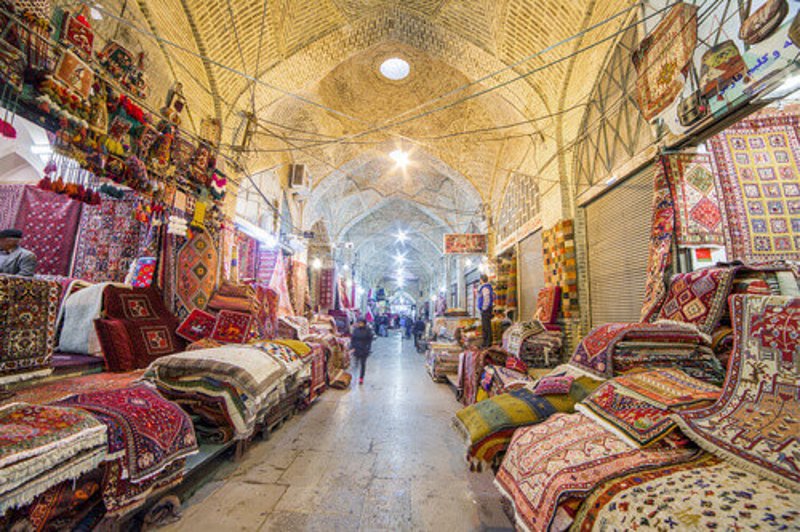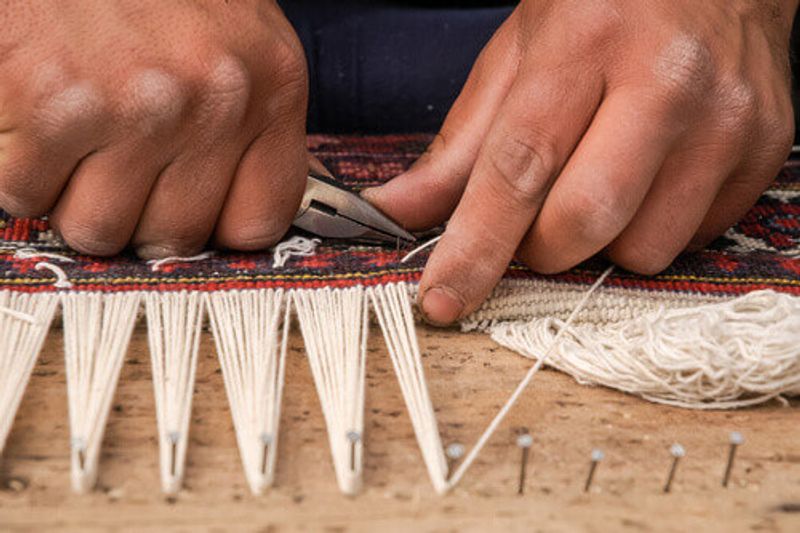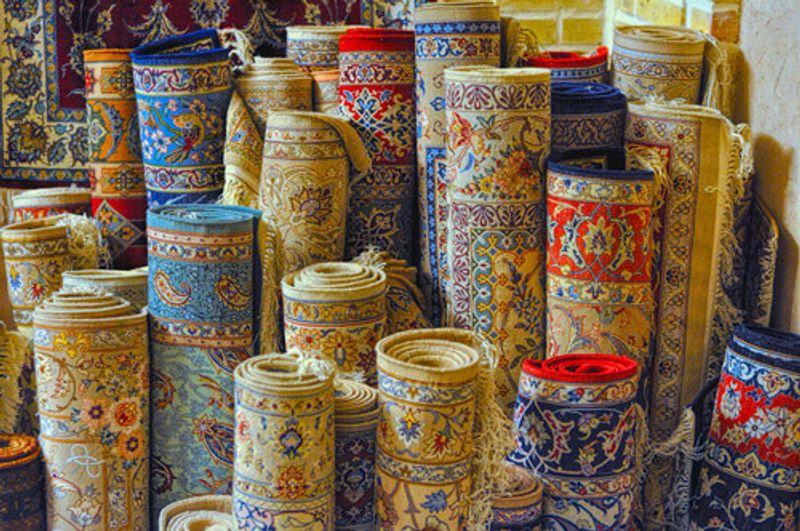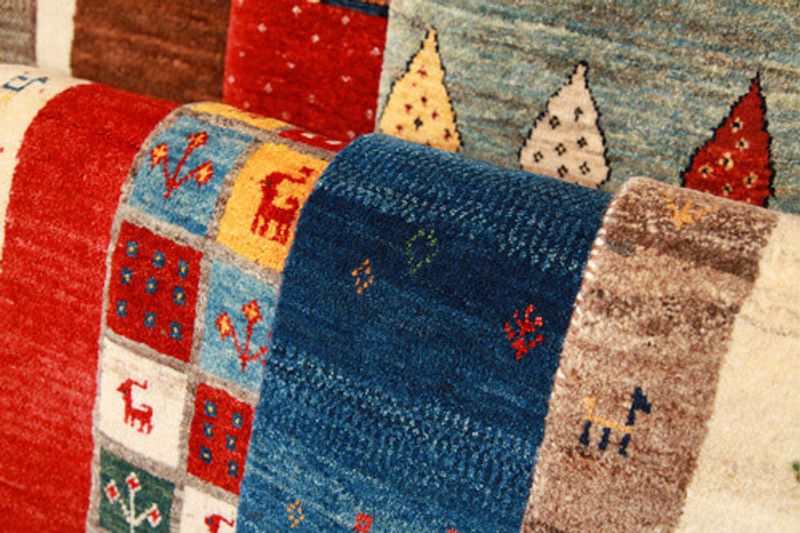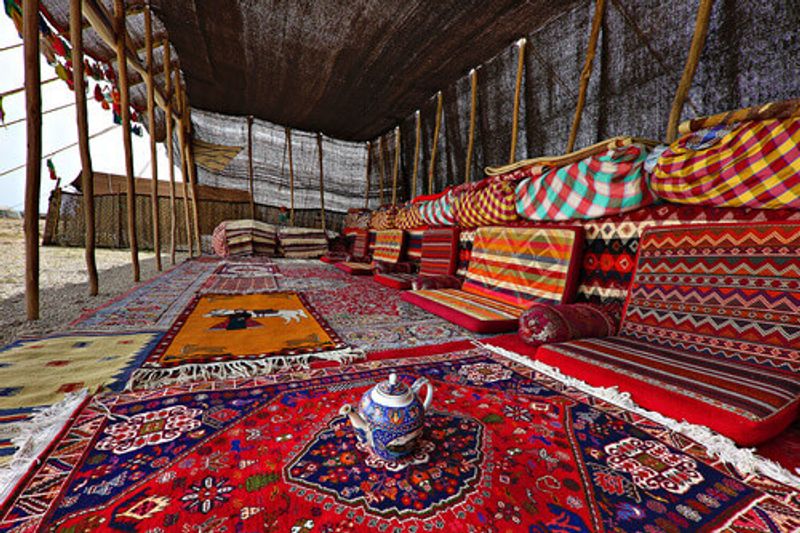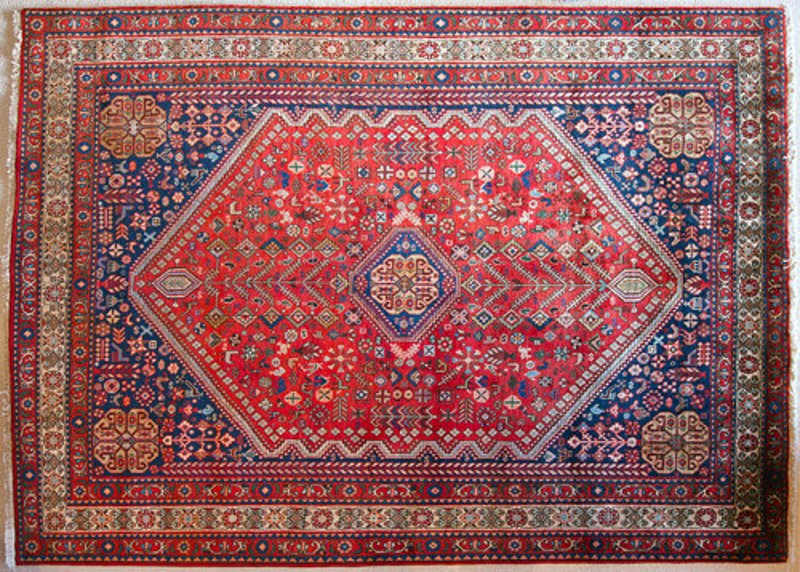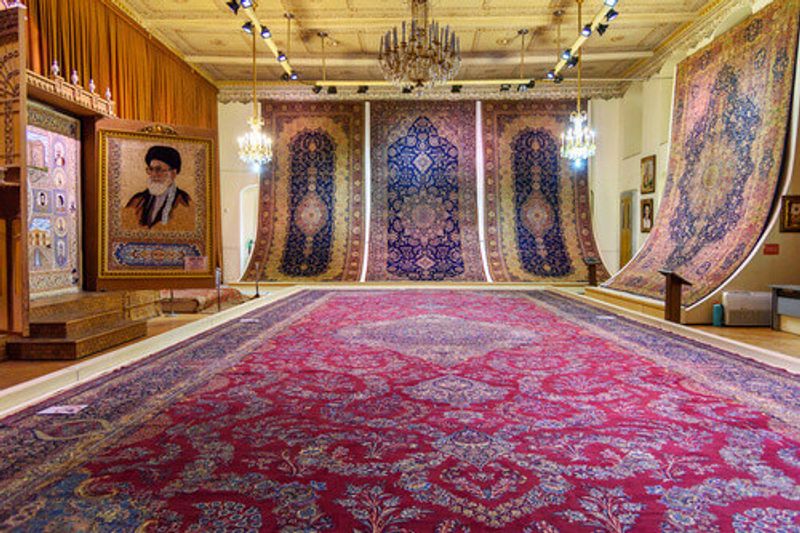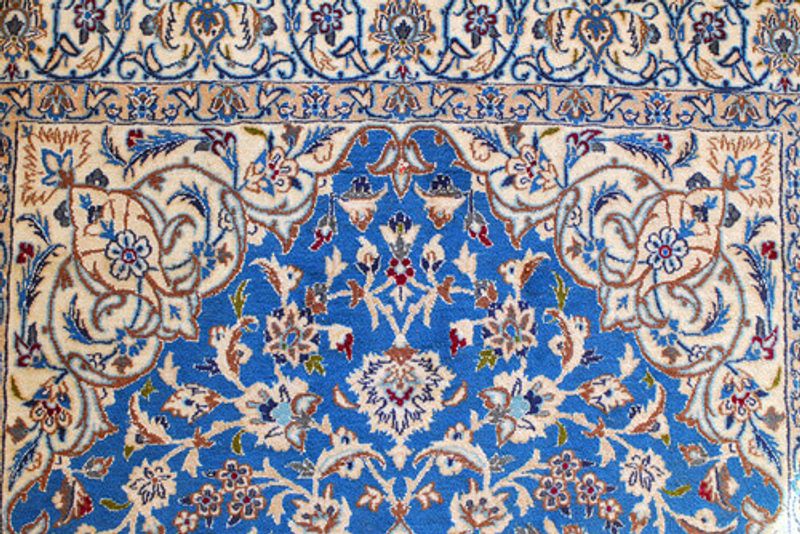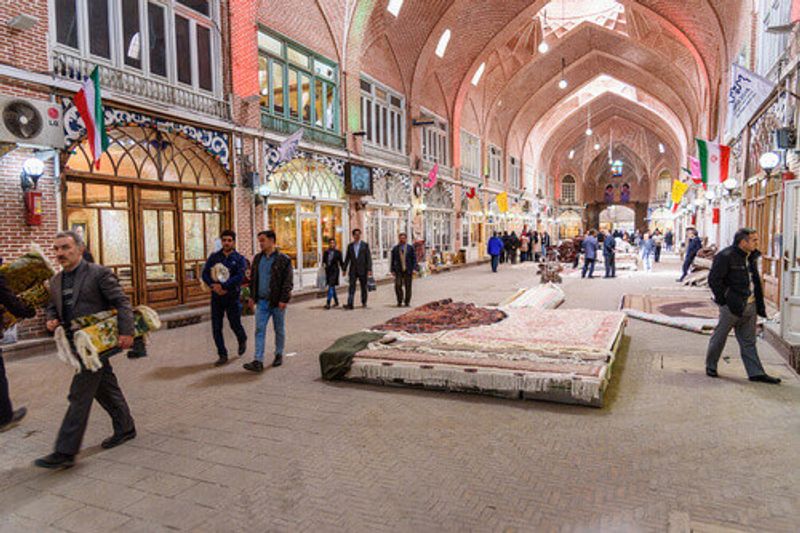Persia and carpets going hand in hand so here is your ultimate guide to bagging one of your own
What to look for
The oldest rug ever discovered was the pile-woven Pazyryk carpet found in Siberia in 1948. It was carbon dated back to the 5th century BCE and thought to have come from the Persian Achaemenid Empire. Persia has become synonymous with carpets and it’s hard not to get wrapped up in learning more about this 4,000-year-old trade whilst in Iran.
Persian rugs are spun from silk or wool or a mixture of the two natural fibres. Silk rugs are usually used as decorative wall hangings due to their fragile nature, whereas the more affordable wool rugs are more commonly found in markets and bazaars.
Purchasing a rug should be regarded in the same way as buying a work of art – only this art work can be walked on. Prices can rise to the tens of thousands of dollars; it may well be passed on from one generation to the next so for those looking to make a purchase, do your research and pick something you love - you'll be looking at it every day, after all.
An authentic Persian rug shouldn’t be machine-made and its fibres should be natural. The quality of real sheep’s wool will vary depending on the breed of sheep, what it has been fed on, and the environment in which it lived. Some factory made rugs will mix synthetic fibres to wool but remember that natural fibres don’t give off a lint.
Likewise, dyes used to stain the wool should also be natural. Traditionally, cochineal insects were used to make red colours; indigo produce blues; and roots, leaves and pomegranate rind are used to make various yellows. Bend the carpet and look at the individual fibres – synthetic dyes will cover the fibre evenly whereas natural dyes will have a subtle unevenness.
As well as the size of the rug, the other determining factors in the price of a rug is the number of knots per square inch (kpsi) that have been used to make it. By looking at the back of the rug it is possible to see how tightly the knots are packed – the tighter the knots the higher the quality. 120 kpsi is regarded as quality but watch out for knots being too tightly packed and perfectly formulaic as this is a sign of a machine made carpet. A lower knot count doesn’t mean bad quality and the softer feel it gives is currently quite popular in modern designs. And finally, make sure to lay your carpet out flat check for bumps – the larger the bump the more likely it is to stay.
Don’t be surprised if there are imperfections in the rug's design. These is traditionally done on purpose to show the fallibility of humans and to prove that only God is perfect.
The different styles
The colour, subject matter and pattern of a carpet varies, in no small part due to the mood of the maker but regional variations all have their own unique styles that make them stand apart from each other.
Tribal rugs
Made by nomadic tribes, these rugs are usually recognised by the use of natural colours – mainly reds and blues – and basic designs that are often irregular in shape. The irregular patterns are caused when tribespeople move camps and in turn, move their looms when still only part way through the weaving process. These are often in stark contrast to the very symmetrical rugs found elsewhere.
Gabbeh rugs are a great example of tribal rugs, made of hand spun wool these thick rugs are usually coloured in shades of natural yellow, orange or rusty reds by the Qashqai and Luri weavers of the Zagros Mountains. The Bakhtiari people of west central Iran (near Isfahan) usually have a floral or garden design and divide their rugs into individual squares with animals and plant motifs. The Bakhtiari rugs often use earthy reds, browns, greens and yellows. The Balouchi rugs are normally smaller in size with simple geometric patterns and dyed blue or dark red. The nomadic Balouchi also use camel or goat hair in beige or browns around the edges of the rugs.
Village rugs
As the name suggests, these rugs are made in villages and are usually of a higher quality and have more consistent patterns than the Tribal Rugs, as the looms they are made on aren’t moved around frequently. They are usually made with a cotton ‘warp and weft,’ which means they are more likely to keep their shape and last longer than tribal rugs. A wider range of colours are also available to village rug makers so golds and yellows are more likely to be incorporated alongside blues and reds.
Heriz rugs are easily identified by their use of bright vibrant colours and bold patterns, and always feature an oversized medallion in the centre of the rug with a double or triple outline and large corner pieces. Hamadan rugs also often feature a central medallion and have repeated geometrical patterns throughout with occasional floral patterns. Abadeh rugs, from a village between the two famous rug making towns of Shiraz and Isfahan, can be recognised by their use of vases and blue corner medallions. Abadeh rugs usually have a large hexagon in the middle and iconography of birds or small animals found on them.
Town weavings
These are regarded the highest quality of all Persian rugs because of the higher quality of looms, which are fixed in position, allowing for a more consistent weave. Town weavings will almost always have a higher knot density and have the most elaborate designs and colours with complex multiple borders.
Isfahan has long been a major rug producing centre but all carpet weaving stopped after the Afghan invasion of 1722. The 20th century saw the skill re-emerge but any antique rugs from the early period will not be cheap. Isfahan rugs are very symmetrical and have a single coloured background with a central medallion in blue or rose, surrounded by vines.
Kashan is known as the oldest rug producing centre in Persia and has a history of making fine silk rugs. The Kashan rugs are recognised for their ornately patterned floral fields and use of deep blues, rich reds and ivory colours. They have some of the highest knot counts up to 800 kpsi.
Tabriz still has a famous rug bazaar and produces some of the highest quality wool-silk mix rugs. The Tabriz rugs are known for having a wide range of exquisite patterns including woodland and hunting scenes. Original antique Tabriz rugs are almost impossible to find today outside of museums.
Nain rugs are high quality with very fine quality wool and a knot count of about 300 kpsi to 700 kpsi. The patterns are very intricate and usually consist of blue or green intertwined branches with tiny flowers woven on a white or light ivory background.
Rugs from the Qum province are also very tightly knotted and have a high silk count. They can be spotted by intricate designs that usually show flowers, birds and gardens and occasionally hunting scenes and come in bold colours. Turquoise is always found in Qum rugs so if there’s no turquoise then it isn’t a Qum rug.
Mashad rugsare usually recognised by their large size and also the large oversized central medallion and elaborate floral background motifs.
Don’t forget…
You’ll not be able to walk a couple of steps without tripping over a rug in most Iranian towns, but there are a lot of dodgy dealers out there willing to help you part with your hard earned cash. Try to avoid the big tourist areas such as Tehran’s Grand Bazaar and look for places in smaller, well-known rug towns such as Shiraz, Isfahan or Tabriz. Remember, antique rugs may date back centuries and costs tens of thousands so make sure you know the age as well as the region it’s from.
Most reputable shops will be able to talk through the design, history, fabric and knot count of the rug, and will not mind you spending time looking over the rugs in detail. Nowadays most carpet dealers can also ship abroad and some offer a decent refunds policy. And remember, keep in mind a budget your willing to go up to, and don’t be afraid to haggle hard.
